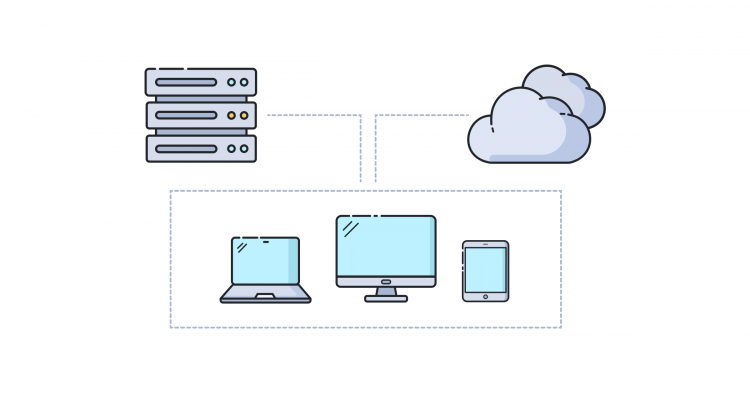Deconstructing the Diverse Virtual Desktop Infrastructure (VDI) Market Segmentation

To fully comprehend the market's intricate structure, a detailed deconstruction of the Virtual Desktop Infrastructure (VDI) Market Segmentation is essential, starting with its segmentation by deployment model. This is the most fundamental distinction, dividing the market into on-premise and cloud-based solutions. The on-premise segment is the traditional model, where an organization builds and manages the entire VDI stack within its own data centers. This model offers the maximum control over security and performance and is still preferred by organizations in highly regulated industries or those with specific data sovereignty requirements. However, the cloud-based segment, often referred to as Desktop-as-a-Service (DaaS), is the largest, fastest-growing, and most important part of the market. In this model, the virtual desktops are hosted on a public cloud provider's infrastructure (like AWS, Azure, or Google Cloud), and the VDI management plane is delivered as a service. This model has democratized VDI, making it accessible and affordable for businesses of all sizes, and is the primary driver of the market's current expansion. A third, hybrid model, which combines on-premise and cloud deployments, is also a significant segment, offering a flexible migration path to the cloud.
Another crucial axis of segmentation is by the type of VDI model, which primarily distinguishes between persistent and non-persistent desktops. A persistent VDI is a one-to-one model where each user is assigned a dedicated virtual desktop that they can customize and that retains all their settings and data between sessions, much like a traditional physical PC. This model is ideal for knowledge workers and developers who require a personalized environment. In contrast, a non-persistent VDI is a one-to-many model where users are assigned a generic, stateless desktop from a pool of identical virtual machines each time they log in. When the user logs out, the desktop is wiped clean and returned to the pool. This model is highly efficient from a management and storage perspective and is ideal for task workers in environments like call centers or classrooms, where personalization is not required. The choice between these two models is a critical design decision that depends on the specific needs of the user base.
Finally, segmenting the market by end-user industry vertical and by organization size provides the most practical and strategic view of the market's application and customer base. The market sees strong adoption across a wide range of verticals. The Healthcare industry is a major adopter, using VDI to provide secure, "follow-me" access to electronic health records for clinicians moving between patient rooms. The Financial Services sector leverages VDI for its strong security and compliance capabilities. The Education sector uses non-persistent VDI to provide students with access to standardized learning environments in computer labs. The segmentation by organization size is also critical. Large enterprises are the traditional customers, with complex, large-scale deployments. However, the Small and Medium-sized Business (SMB) segment is now the fastest-growing part of the market, driven by the accessibility of cloud-based DaaS solutions. Understanding the unique security, compliance, performance, and cost requirements of these different verticals and organization sizes is essential for vendors to tailor their solutions and effectively compete in this diverse and dynamic market.
Sponsored
Sponsored
Categories
- AI
- Design
- Fashion and Art
- Investment and Finance
- Top 10
- Christianity
- Climate and Enviroment
- Writing and Film
- Fitness
- Food
- Games
- Gardening
- Health
- Home and Interiors
- Marketing and Sales
- Music
- Making Money Online
- Others
- Books
- Religion
- Ecommerce
- Sports
- Cars
- Wellness
- Tech Gadgets
- Events
- Governments and Nations
- Science and Engineering
- Real Estate
- Travel, Tourism and Hospitality
- Education
- Startups
- Beauty and Cosmetics
- Agriculture
- Computer Operating Systems
- Crypto
- Politics and News
- Video Review
- Immigration
Read More
In-Depth Study on Executive Summary Platelet Aggregation Devices Market Size and Share The global platelet aggregation devices market size was valued at USD 927.45 million in 2024 and is expected to reach USD 1.44 billion by 2032, at a CAGR of 5.67% during the forecast period. This growth is driven by factors such as the rising prevalence of...

Latest Insights on Executive Summary Middle East and Africa Industrial Boilers Market Share and Size Middle East and Africa Industrial Boilers Market was valued at USD 1075.79 million in 2021 and is expected to reach USD 1375.76 million by 2029, registering a CAGR of 4.80%during the forecast period of 2022-2029. To produce the best market research report, a wide range of objectives is...

The global Virus-Resistant Crop Chemicals Market is witnessing remarkable growth, driven by increasing demand for sustainable agricultural practices and the urgent need to protect crops from viral infections. Virus-resistant crop chemicals play a crucial role in enhancing food security, ensuring higher yields, and reducing crop losses caused by pathogenic outbreaks. The market’s...

Executive Summary Dicyclopentadiene (DCPD) Market Size and Share Analysis Report CAGR Value: The global dicyclopentadiene (DCPD) market size was valued at USD 1.32 billion in 2024 and is expected to reach USD 1.98 billion by 2032, at a CAGR of 5.20 % during the forecast period. Businesses are very much depending on the diverse segments...

#80 Chains are an integral part of many industrial systems, offering reliability and strength for power transmission applications. However, like any mechanical component, #80 chains require proper maintenance to ensure long-term performance and avoid costly repairs or replacements. The key to maintaining a #80 Chain is regular inspection and lubrication. Over time, friction and wear can...


